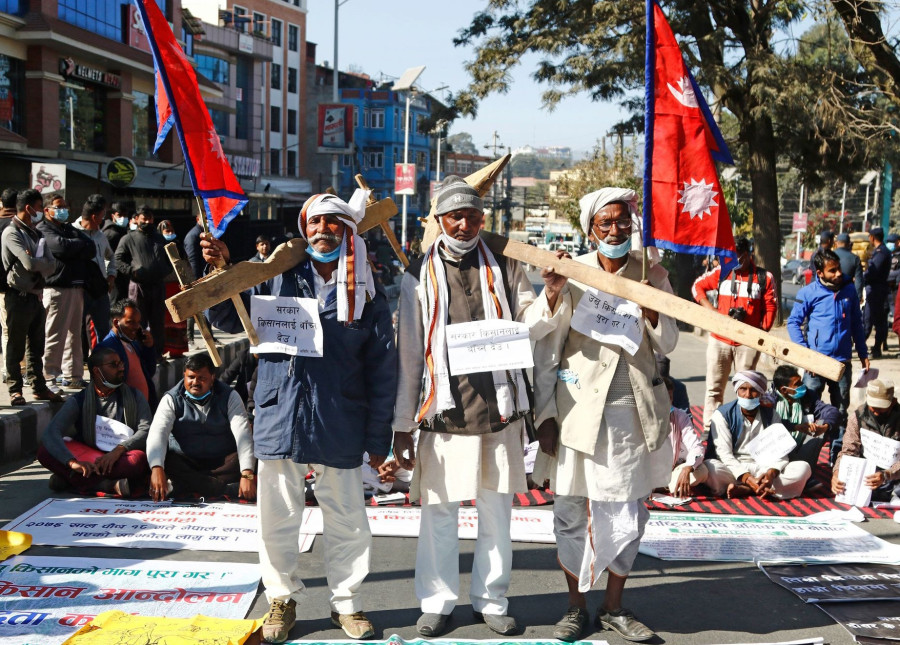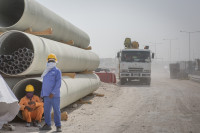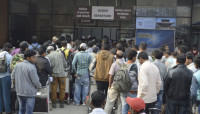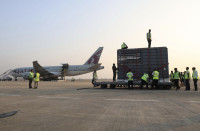Columns
Quick and effective decisions
The government should show how its policy decisions can create changes on the ground in favour of farmers.
Madhukar Upadhya
The resurgence of Covid-19, caused by a new, more transmissible variant, has once again reminded us that we’re living through extraordinary times. Additionally, overcoming these challenges will be a testament to our foresight and planning. Unfortunately, the pandemic remains one of many problems facing the state. Our economic indicators present a bleak picture of the country’s prospects. A widening trade deficit and declining remittance have led to a depleting foreign exchange reserve.
The ravages of the climate crisis, in the form of floods, landslides, drought, and diseases, continue to impair local economies. Unlike in the past, the government claims to have made the necessary preparations to tackle the pandemic head-on: from vaccine drives to increased testing and making appropriate arrangements across hospitals—a commendable endeavour indeed. However, equally important, especially in the long run, is taking steps to enable farmers to adapt to the impacts of climate change because a large number of people are dependent on agriculture. The success of government efforts to improve the economic situation depends on how effectively it can help farmers overcome these challenges, depending on how well the decision-makers adapt to the changing climate.
The uncertainties
Agriculture contributes about 27 percent to our GDP; it remains the only sector providing Nepal with a reliable, sustainable economic foundation. Unfortunately, agriculture suffers from numerous uncertainties, such as the unavailability of seeds, fertilisers, irrigation facilities, and labour. Tens of thousands of rice farmers lost ready-to-harvest crops three months ago. Before that, many others lost their farms due to floods, like in Melamchi. Who else would be more familiar with the vagaries that plague farming than Nepali farmers, frequently suffering the havoc of floods, droughts, insects, diseases, wildlife, and hailstorms? Last October’s rain, subsequent flood, and the inundation it caused, along with the massive crop loss, are going to haunt farmers for a long time. The loss was estimated to be about Rs11 billion.
There are more examples of farmers losing crops. Recently, in Sindhuli, mature orange trees were damaged entirely by disease. Decades’ worth of time and effort wiped out with only the loss of millions of rupees worth of profits to show for. Farmers in western Tarai had to discard commercially-grown banana trees after an unidentified disease affected them. In the Melamchi Valley, farms damaged by floods over a large area will remain buried under debris for decades to come.
The loss of major crops or farmland due to environmental causes has at least two immediate consequences; Firstly, it pushes farmers further into the debt trap, undermining the government’s efforts to eradicate extreme poverty for all people by 2030. And secondly, it increases the import bill of food to maintain food security, further widening the trade deficit. A third, oft-overlooked consequence is the economic chasm created by crop loss. Poor farmers can only produce enough to support their families for a few months of the year; they rely on other employment opportunities for the remaining period. Better off, farmers run into debt, too, when their crops are destroyed. With their entire harvest lost, farmers need to economically recover by either producing a much higher yield in the following season, which is not easy with existing practices and amidst prevailing ambiguities, or seeking off-farm employment in the labour market.
Our hills are already devoid of the youth due to unimpeded labour migration. Low returns from the sorry state of our agricultural sector, a large part of which is due to crop failure and continued loss of land, is the primary reason behind this migration. The scale of the October floods has likely pushed more people from the low lands to join the foreign labour market to compensate for their lost income. It’s a sad reality that nearly a third of our population, mostly comprised of young people, are in the labour market, earning the state over Rs900 billion every year in remittance. Remittance income, which increased threefold in the last decade, hasn’t helped build the foundation of our economy. Instead, it has hurt efforts to lay that foundation to build a robust economy without crucial labour. Yet, our authorities seem happy to send more people abroad in the hopes of additional remittance.
Adapting by decision-makers
Paradoxically, the government has devoted itself to making plans to help farmers adapt to a changing climate. But shouldn’t the government also begin to adapt to the rapidly changing environment, make decisions, and act upon them? The government’s adaptation should show how its policy decisions can create changes on the ground in favour of farmers by incorporating future risks into those decisions.
Additionally, these decisions must also be made without delay, so farmers can begin to restore their faith and trust in the government, particularly during difficult times. However, three recent examples show no such efforts on the part of the state. Firstly, the minimum price for sugarcane was supposed to be set in November but was delayed by two months. In the end, the sugarcane dried, and farmers suffered. Secondly, the government promised to compensate rice farmers devastated by the October floods; they are yet to receive any help. Timely distribution of the compensation would’ve helped farmers plan their winter crops on time. The third case is the shortage of fertilisers. The rain this winter has been timely for winter crops, including wheat. Unfortunately, farmers couldn’t take full advantage of favourable weather due to the government’s failure to make fertiliser available on time.
Our problems continue to pile up. We still have to see how winter precipitation will affect agriculture in the coming months. Erratic monsoon rain will most likely lead to floods and landslides in the next five months. Sadly, the political wrangling has led to dysfunctional state machinery; from the parliament to the judiciary, the institutions responsible for deliberating and commanding the government to make appropriate policies concerning civilians have stagnated.
The pandemic has reiterated time, and again that preparedness is non-negotiable. And it applies to every other field, including climate change. We can’t expect to revive our economy without preparedness while addressing these significant problems. Unfortunately, it will only happen when decision-makers adapt to our changing circumstances and make and implement policy decisions effectively to help farmers. Otherwise, we will only see worse situations with policy decisions that are often too little too late and far removed from reality.




 14.12°C Kathmandu
14.12°C Kathmandu













%20(1).jpg&w=300&height=200)

